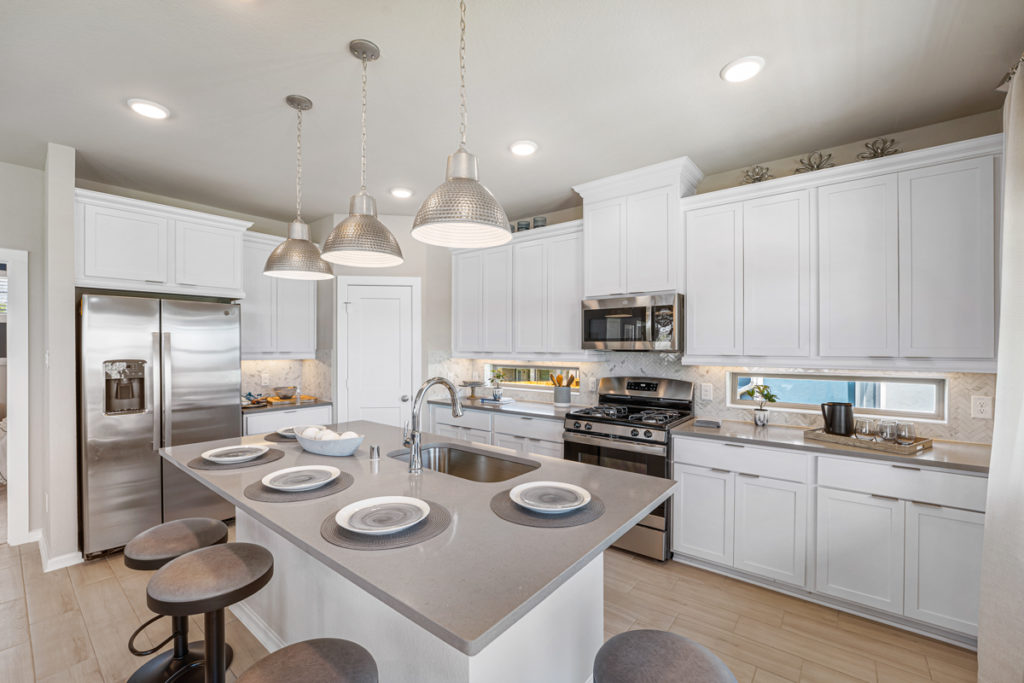When you hit your Balmoral builder’s design center, you are going to be asked to make a lot of choices. Lost in the excitement of picking out flooring and cabinets is what type of lights you will have. Yet, getting the lighting right in your home can significantly enhance both functionality and ambiance. How? Here’s a handy guide.
What Type is Right?
In general, there are three types of lighting. The type you choose depends on what you want to do. Ambient lighting provides the general illumination for a space. It’s the foundation of your lighting design and should be bright enough to allow for easy movement and visibility.
Task lighting focuses on specific areas where activities like reading, cooking or working take place. This type of lighting should be bright enough to reduce eye strain and improve concentration.
Accent lighting is used to highlight specific features in a room, such as artwork, plants or architectural details. This type of lighting adds depth and interest to your space.
Think Light Layers
Using a combination of ambient, task and accent lighting creates a well-balanced environment. Layering different types of lighting allows you to adjust the mood and functionality of a room easily. For example, in the family room you might want overhead lights (ambient), side table lamps for reading (task) and track lighting to illuminate wall art (accent).
Lights Have Color Temperatures
The color temperature of your light bulbs can affect the feel of a space. Warm white light (around 2700K) creates a cozy atmosphere, while cool white light (around 4000K) is more energizing and suitable for task-oriented areas. Choose the right temperature based on the room’s purpose.
Dimmer Switches Are Your Friend
Installing dimmer switches allows you to control the brightness of your lights, making it easy to adjust the mood for different activities. You don’t even need a switch. Most homes now feature smart lights so you can adjust lighting with just a command.
Position Lights Strategically
For task lighting, position fixtures to minimize shadows and glare. For example, place desk lamps to the side of your workspace rather than directly in front to avoid screen glare. In kitchens, ensure under-cabinet lights illuminate countertops effectively.
If You Have Natural Light, Use It
Maximize natural light by keeping windows unobstructed and using light, airy window treatments. During the day, rely on sunlight to reduce the need for artificial lighting. This not only saves energy but also creates a more inviting atmosphere.
Select Your Fixtures
Select light fixtures that complement your decor while serving their purpose. For instance, pendant lights can add style over kitchen islands, while sleek desk lamps can enhance a modern office space.
Safety First
Ensure that your lighting design considers safety, especially in areas like staircases and hallways. Use bright, even lighting to prevent accidents and consider motion-sensor lights for added convenience.
Check Out Our Lights
If you want to see lighting done right, visit Balmoral and check out our model homes. These professionally decorated homes demonstrate how your light choices can enhance the beauty of your home. Visit today.

